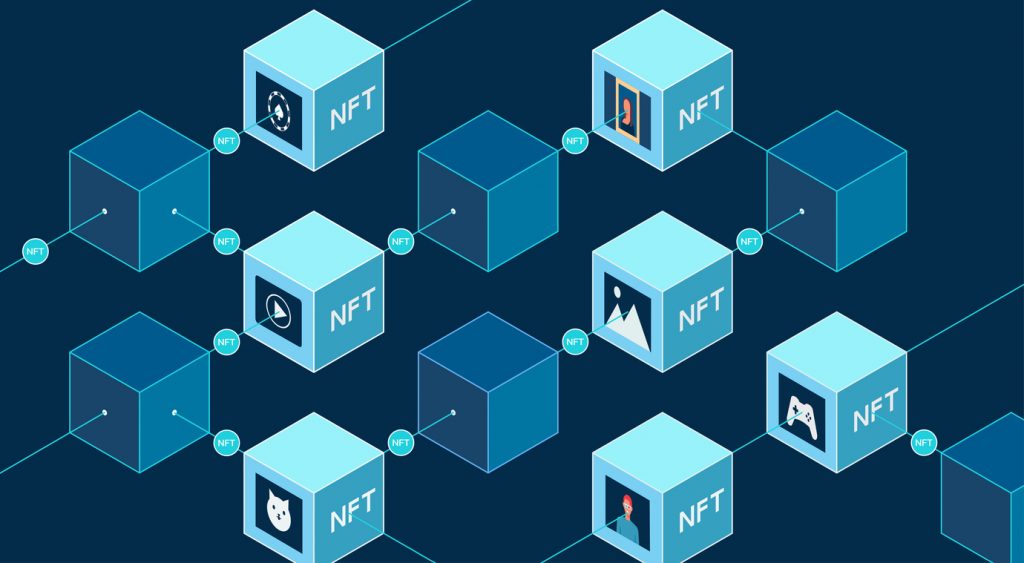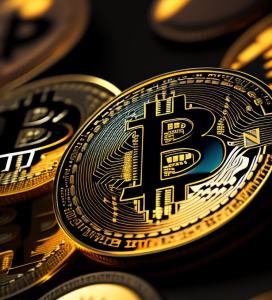In 2021 alone, we’ve seen A-list names like Michael Jordan, Mark Cuban and 2 Chainz investing millions in NFT-based start-ups and auctions for NFT-linked assets fetching outstanding sums of money, including Jack Dorsey’s first Tweet ($2.9 million) and collections of digital artworks by Grimes ($6 million) and “Beeple” ($69 million!), just to scratch the surface.[i]
While often linked to digital assets, NFTs (and Smart Contracts) can also be used to sell discrete physical assets like one-of-a-kind sneakers, vinyl records and concert tickets,[ii] and the future could see their use in transactions for major purchases like cars and houses. However, before you or your clients start minting, selling, buying or trading NFTs, you should understand what NFTs and Smart Contracts are, the rights involved in NFT transactions, and some lurking dangers.
Thus, the value in buying an NFT is often in creating a collectable (non-fungible) version of an otherwise a replicable (fungible) asset.
What are NFTs? A “token” is a digital asset stored on a secure, but transparent distributed blockchain ledger. Non-fungible means one-of-a-kind—like a record-breaking home run ball, a bootleg concert recording, or collectables like baseball cards. Thus, an NFT is a digital asset that is linked to a discrete and unique asset. In contrast, a fungible token such as Bitcoin is an asset in itself—its value fluctuates relative to other currencies, but all Bitcoin are the same and equal fractioned amounts of bitcoin will have equal value against each other. The process of creating an NFT is called “minting.”
Like Bitcoin, NFTs enjoy the security, transparency and immutability of cryptographic storage, but whereas Bitcoin are divisible to 10-8 degree, NFTs are indivisible and can store significant amounts of data, including unique information, which is what makes a particular token “non-fungible,” and is stored in a “Smart Contract,” computer code that automatically executes upon the occurrence of a set of preconditions.
Combining a Smart Contract with other unique identifying metadata—such as the identity of the owner, and secure file links—along with the security afforded by blockchain, provides practically irrefutable proof of ownership and authenticity to prospective buyers.[iii] Smart Contracts can prevent someone from transferring an NFT or accessing an underlying asset unless all preconditions specified in the contract are satisfied, including potentially paying royalties on the resale of the NFT. While most early NFTs can be resold without restrictions, some NFT marketplaces are encoded to enforce Smart Contracts royalty “clauses,” which upon the resale of an NFT, automatically pay a fee to the minter-seller, usually as a fixed percentage of the resale price.[iv]
In laymen terms, NFTs and Smart Contracts act simultaneously as a “certificate of authenticity” for the underlying asset and as a valuable representation of ownership of a real asset like a stock.
While there are no laws yet relating to cryptographic assets, legal systems should largely be able to adapt existing laws and principles to blockchain technology as was done for online activities.
While NFT auctions have yielded jaw-dropping real dollar figures, what does a buyer really possess? Ultimately, an NFT owner has access to the underlying asset, but they may lack exclusive access to or control of the asset, let alone ownership of the asset or any intellectual property (IP). Indeed, the default rule is that a patentee or copyright owner retains all IP unless it is clear from the language of a signed writing (e.g., the Smart Contract) that ownership of an intellectual property right is being transferred.[v] In most cases, Smart Contracts do not transfer IP rights.
An NFT owner may have an implied licence in the same way that the purchaser of a useful machine is not infringing a patent by using it as intended or how the purchaser of music is not infringing copyrights by privately singing along with their copy of a record. For example, hundreds of people bought the NFT version of the new Kings of Leon album and received exclusive digital and physical collectables, but the same music was released via traditional streaming and purchase outlets and the Kings of Leon (or their label) still retain all copyrights. In collectable cases like this, owning an NFT is like owning one of the roughly 10,000 copies of Nolan Ryan’s 1968 Topps rookie card, with the added bonus that your version of the card is authenticated and you are probably the owner. Thus, the value in buying an NFT is often in creating a collectable (non-fungible) version of an otherwise a replicable (fungible) asset.
In the meantime, the NFT craze is just beginning and we can either continue to gawk at lofty sales or join the fray.
Despite the security offered by blockchain, this new industry is ripe for fraud and misuse, particularly in attempts to mint and sell NFTs linked to assets not owned by the minter-seller, be it a copyrighted work, trademarked brand or celebrity likeness. In a recent example, an NFT auction for a drawing by Jean-Michel Basquiat that purportedly included “reproduction and IP rights...in perpetuity” was pulled after Basquiat’s estate clarified that it still owned all copyrights in the sketch and that the NFT seller had no rights to give away.[i]
While there are no laws yet relating to cryptographic assets, legal systems should largely be able to adapt existing laws and principles to blockchain technology as was done for online activities. For starters, most disputes between a buyer and seller of NFTs should be easily resolved either by the Smart Contract or by a judge applying traditional principles of contract law. In Internet-based copyright infringement lawsuits between parties of different nationalities, U.S. courts apply a two-step “conflict of laws” analysis, determining the validity of the IP right under the laws of the nation where the work was created, and determining liability for infringement under the laws of the nation where the tort occurred. Similar rules could apply to this context.
Another issue is that, since NFTs are, at bottom, data stored in cyberspace, there is a risk of non-permanency and losing access to digital assets linked to NFTs. In the meantime, the NFT craze is just beginning and we can either continue to gawk at lofty sales or join the fray.
[i] See Anny Shaw, Art Newspaper, Basquiat NFT withdrawn from auction after artist’s estate intervenes, Apr. 28, 2021, https://www.theartnewspaper.com/news/basquiat-nft-withdrawn-from-auction-after-artist-s-estate-intervenes
[i] See Jon Blistein, RollingStone, Twitter’s Jack Dorsey Sells First Tweet as Non-Fungible Token, Mar. 22, 2021, https://www.rollingstone.com/culture/culture-news/twitter-jack-dorsey-first-tweet-nft-cryptocurrency-1138401/; Gerrit De Vynck and Douglas MacMillan, The Washington Post, He just spent $69 million on a digital piece of art. It’s not his first Beeple, Mar. 18, 2021, available at https://www.washingtonpost.com/technology/2021/03/17/nft-beeple-metakovan-christies/; Danny Nelson, Coindesk, Michael Jordan Joins $305M Investment in Firm Behind NBA Top Shot, Mar. 30, 2021, https://www.coindesk.com/michael-jordan-joins-305m-investment-in-firm-behind-nba-top-shot; Tim Hakki, Decrypt, Mark Cuban Invests in NFT Tracker CryptoSlam, Apr. 17, 2021, https://decrypt.co/66897/mark-cuban-invests-nft-tracker-cryptoslam; Will Gottsegen, Decrypt, Grimes Just Sold Her Crypto Art NFT Collection for $6 Million, Mar. 1, 2021, https://decrypt.co/59827/grimes-nfts-crypto-art.
[ii] See, e.g., Cam Wolf, GQ, What Is an NFT Sneaker, and Why Is It Worth $10,000? Apr. 28, 2021, https://www.gq.com/story/nft-fashion-sneakers; Samantha Hissong, RollingStone, Kings of Leon Will Be the First Band to Release an Album as an NFT, Mar. 3, 2021, https://www.rollingstone.com/pro/news/kings-of-leon-when-you-see-yourself-album-nft-crypto-1135192/; Claire Shaffer, RollingStone, The White Stripes Drop ‘Seven Nation Army’ Remix, NFT Release, Apr. 23, 2021, https://www.rollingstone.com/music/music-news/the-white-stripes-seven-nation-army-remix-nft-1157823/; Jacob Gallagher, Wall St. J., NFTs Are the Biggest Internet Craze. Do They Work for Sneakers?, Mar. 15, 20221, https://www.wsj.com/articles/nfts-and-fashion-collectors-pay-big-money-for-virtual-sneakers-11615829266 (sub req.).
[iii] See Josie Thaddeus-John, N.Y. Times, What Are NFTs, Anyway? One Just Sold for $69 Million., Apr. 13, 2021, https://www.nytimes.com/2021/03/11/arts/design/what-is-an-nft.html; Rakesh Sharma, Investopedia, Non-Fungible Token (NFT) Definition, Mar. 8, 2021, https://www.investopedia.com/non-fungible-tokens-nft-5115211; Jake Frankenfield, Investopedia, Smart Contracts, Mar. 25, 2021, https://www.investopedia.com/terms/s/smart-contracts.asp; Stuart D. Levi and Alex B. Lipon, Harvard Law School Forum on Corporate Governance, An Introduction to Smart Contracts and Their Potential and Inherent Limitations, May 26, 2018), available at https://corpgov.law.harvard.edu/2018/05/26/an-introduction-to-smart-contracts-and-their-potential-and-inherent-limitations/; Melanie Kramer and Daniel Phillips, Decrypt, Non-Fungible Tokens (NFT): Beginner's Guide, Feb. 4, 2021, https://decrypt.co/resources/non-fungible-tokens-nfts-explained-guide-learn-blockchain; Matt Hussey and Daniel Phillips, Decrypt, What Are Smart Contracts and How Do They Work?, Jan. 8, 2011, https://decrypt.co/resources/smart-contracts.
[iv] See James Beck, Consensys, Can NFTs Crack Royalties And Give More Value To Artists?, Mar. 2, 2021, https://consensys.net/blog/blockchain-explained/can-nfts-crack-royalties-and-give-more-value-to-artists/; Zach Burks, James Morgan, Blaine Malone, James Seibel, Ethereum Improvement Proposals, EIP-2981: ERC-721 Royalty Standard, Sept. 15, 2020, https://eips.ethereum.org/EIPS/eip-2981#optional-royalty-payments; Eileen Brown, ZDNet, New platform uses NFTs as a gateway for digital rights management, Mar. 4, 2021, https://www.zdnet.com/article/new-platform-uses-nfts-as-a-gateway-for-digital-rights-management/.
[v] See 35 U.S.C. § 261 (“Applications for patent, patents, or any interest therein, shall be assignable in law by an instrument in writing.”); 17 U.S.C. § 204(a) (“A transfer of copyright ownership . . . is not valid unless an instrument of conveyance, or a note or memorandum of the transfer, is in writing and signed by the owner of the rights”).





















